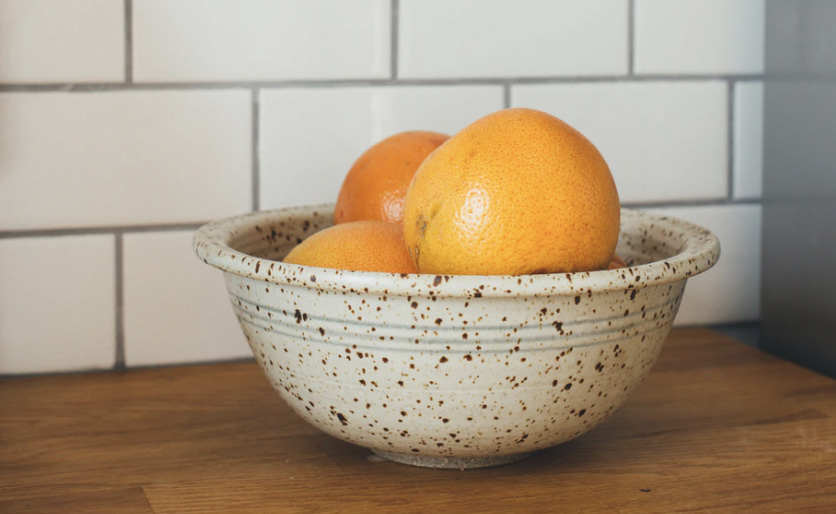Waiting For the Right Time to Change
Well, we're here.

That’s right — it’s 2020!
Being that it’s the start of a new year, many of us have set our New Years’ Resolutions (if you haven’t, you should!) and are ready to kick 2020s ass.
I. LOVE. IT.
However, this time of year always brings the question to mind, ‘Is there ever a good time to bring change into our lives? & ‘Why did I wait until the 1st of Jan to do it?’
The short answer; no, there isn’t & because it’s a nice, neat unit of measurement.
The long answer goes far deeper, delving into our behavior change psychology & habit creation/destruction loops.
There is never a convenient time to make meaningful changes in our lives. There are some nice checkpoints that make it easier to start a new lifestyle from (birthdays, new year, dramatic life events), but the act of bringing in change is always at a cost of current convenience.

Humans, as a species, crave routine & habitual living. We find this all throughout our mental & physical being, i.e. habits are created to reduce energy spent on repeated tasks, our gut microbiome & food cravings will begin to change depending on what we are feeding ourselves.
We form habits to reduce the amount of energy we need to spend on mundane day-to-day tasks, I.E. tying shoelaces, brushing teeth, checking our phone for social media notifications.
Habits can be fantastic & fundamentally positive in our lives, if we train them to be. The inverse, as I’m sure you all know, is that without regulation, adaptation & training, our habits can become negative influences that can lead us away from our optimal selves.
It should not be understated, changing our behavior (once set over time) is a difficult process to conquer. The longer the behavior has been tolerated, the harder it is to change.
Behavior change of any kind requires discipline, focus & consistency. It’s never convenient, but you CAN do it and the sacrifice is worth every bit of energy.
Stop looking for the perfect moment to implement change, it won’t come. Instead, start taking control of your behaviors with small, manageable and sustainable changes, now.
James Clear, author of Atomic Habits & habit change specialist, breaks down how to make better habits into 4 simple, actionable steps. When implemented & followed, this process makes behavior change an easier process to undertake with higher rates of success — how good!
The 4 steps are as follows:
1. Make it obvious.
If you’re having trouble getting enough fruit and veg in, place it somewhere in the kitchen that is SUPER obvious. Leave a bowl of fruit on the most regularly utilized table in the house. Hang a sign that says ‘Eat more veggies!’ on the fridge.

Give yourself visual cues to keep the behavior you want to introduce in the forefront of your mind. Make it obvious.
2. Make it attractive
Attaching a new behavior to an attractive end goal is an extremely effective way of reminding yourself why you’re aiming to change. Without an attractive end goal, why would you put yourself through a period of change? For example, if your goal is weight loss and your change is to make healthier eating choices, reminding yourself of how you will feel when you accomplish what you set out to do will help push you in the right direction.
Remind yourself of the end goal frequently & that the habit you’re implementing is a step toward it. Make it attractive.
3. Make it easy.
Long term habit change is the best type of habit change. Changing your eating behaviors is not an all-in, all-out process! Start small and build upon your habits as you progress. If your aim is to eat more veggies, start with 2 days a week. Once you are hitting your two days a week consistently, challenge yourself to 3 days, 4 days and so on.
Start small & build on it. Make it easy.
4. Make it satisfying
The idea here is to work towards a reward for the effort you are putting in. For example, this is the driver behind what has been commonly dubbed as a ‘cheat meal’. While I don’t personally use this terminology (I believe this type of language attaches negative emotions to food), most of you will have heard of this. This is when someone will restrict their eating habits in order to facilitate weight loss, but will have 1 meal a week of their choice. This setup gives the user motivation to stick to the plan.
Maybe you’ve seen a new gadget you can’t live without, maybe a new pair of shoes — whatever it is, set a target & a reward for hitting the target. Make it satisfying.

I think we all know what it’s like to get to the end of a year and realize that we haven’t achieved all we set out to do (I definitely do!). Spoilers, it feels terrible.
Ensuring these 4 steps are implemented in your habit change increases the likelihood of it your success in facilitating the change you desire. It may take you some time to think of ways to make sure all 4 steps are accounted for, however, if you put the time in you are only reinforcing to yourself how important this change is. The age-old advice rings true, “Failing to plan, is planning to fail”.
The point, there will never be a good time to change your eating habits to ones supporting a healthier & happier lifestyle. (Yes, happier. There are several studies proving Serotonin — our ‘feel good’ neurotransmitter — is mainly produced in the gut from the amino acid, Tryptophan).
There are always birthday parties.
There will always be travels & conferences coming up.
There are always going to be reasons to not change.
“I’ll change it after… insert event/birthday/whatever’ is not a good enough reason to not change.
Change of any kind does not have to be an all-in, all-out approach. In fact, in my personal experience with 100s of clients requiring behavior change, a slower & more flexible path of change is far better than an all-in, all-out.
Making better choices 10% of the time is better than not at all.
Making better choices 50% of the time for a whole year is far better than 100% for 3 weeks.
Making better choices 80% of the time is building a lifestyle you can continue FOREVER — that’s the goal.
The number 1 factor that determines the success of change, is consistency. A plan that is 70% right, that can be adhered to 100% of the time is more advantageous than a plan that is 100% right but can only be followed 70% of the time.
Small habits compound over time. Aiming to be 1% better every day is far, FAR better than not aiming to be better at all.
Don’t aim to be perfect in your changes, just aim for progress. Cut yourself some slack. Enjoying some cake at a birthday party doesn’t mean you have ‘gone off the rails’, you’ve just enjoyed some cheesecakey goodness.
It’s fine.
You’re fine.
Enjoy the cake & get back on the better choices train tomorrow.
Embarking on any journey of change can be daunting, especially when you’re looking at the end goal from your starting position. Be reasonable with yourself & take it slow. Break down the end goal into smaller, mini-goals & aim for progress.
The smaller you make the changes, the less likely you are to drop the ball & tell yourself it’s too hard.
1%, every day.
Michael Naess is a Personal Trainer & Sports Nutritionist, specializing in physical change, behavior change & personal development for white-collar professionals. Michael is location independent, working completely online serving the Look Good Naked Co. community with constant training & nutrition advice, motivation, and quality banter. You can learn more about the Look Good Naked Co. philosophy & methods at https://www.lookgoodnakedco.com.au/
